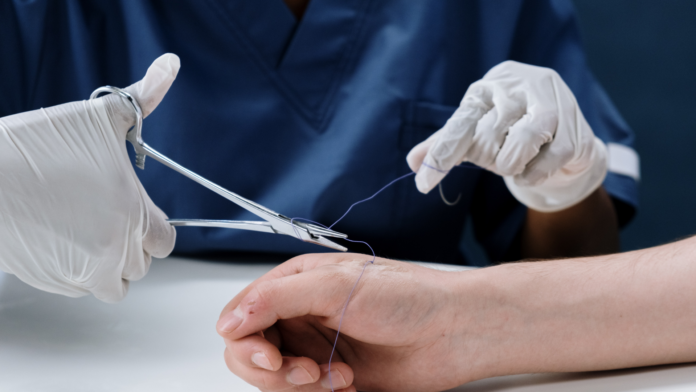Sutures, or stitches, have been an important medical tool for centuries, but they are not great at their job.
Sutures are sterile surgical threads that are used to close wounds and help the body’s natural healing processes. But, unsurprisingly, rough inflexible fibres are not ideal for repairing soft human tissues. This mismatch can cause inflammation, damage and compromise long-term healing.
Biologically derived sutures made from collagen and silk proteins do exist, and they are more advanced than traditional metallic or plastic versions. However, complex production processes, high costs and limited structural integrity have limited the use of these ‘functional sutures’.
To tackle this problem, researchers from McGill University and the INRS Énergie Matériaux Télécommunications Research Centre have developed a way of coating sutures to reduce the damage they cause.
Inspired by human tendons, these tough gel sheathed (TGS) sutures imitate the structure of soft connective tissues.
“Our design is inspired by the human body, the endotenon sheath, which is both tough and strong due to its double-network structure. It binds collagen fibres together while its elastin network strengthens it,” says lead author Zhenwei Ma, a PhD student under the supervision of Assistant Professor Jianyu Li at McGill University.
In the human body, endotendon sheaths wrap and glue collagen fibres together into strong and frictionless tendons. These sheaths also contain cells and blood vessels for nutrient transport and repair.
Learning from this structure and function, the researchers developed a slippery-yet-tough alginate-polyacrylamide hydrogel wrapping. When applied to existing commercial sutures, this gel sheath could improve performance.
To test the ‘bioinspired’ suture sheath, the researchers compared tensile strength, flexibility, friction and tissue drag, among other biomechanical properties.
They found that the gel was nearly frictionless and mitigated the damage caused by traditional sutures, without compromising tensile strength. It can also house and release drugs to support advanced wound healing and fight infection.
The researchers even infused the gel with pH-sensing beads that visibly change colour as an infection takes hold.
“This technology provides a versatile tool for advanced wound management. We believe it could be used to deliver drugs, prevent infections, or even monitor wounds with near-infrared imaging,” says Li, a Canada Research Chair in Biomaterials and Musculoskeletal Health.
While more research is needed to fully operationalize this technology, the researchers are excited about its potential.
“The ability to monitor wounds locally and adjust the treatment strategy for better healing is an exciting direction to explore.”








































